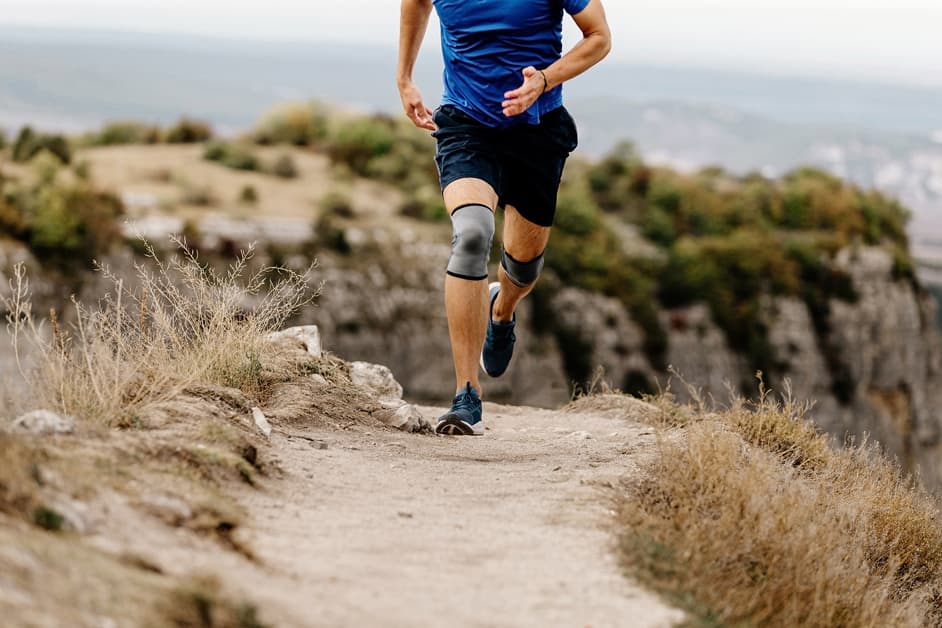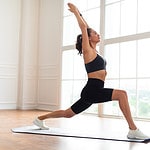Introduction
Knee braces – a common aid to support and stabilize the knee joint. Doctors and physical therapists often propose them to manage pain and avoid future injuries. Here’s a guide to the various types of knee braces, along with instructions on how to use them correctly and safely for pain relief.
- Types of Knee Braces
- Instructions on How to Use
- Pain Relief
What is a Knee Brace?
A knee brace is a device that helps with injuries or conditions like arthritis, tendonitis, ligament sprains, osteoarthritis and meniscus tears. It can lessen the pain.
Knee braces come in various shapes. Simple neoprene sleeves offer minimal support but allow for regular movements. Full-length braces have rigid bars and hinges for extra stability. Some have adjustable straps for comfort, better movement or alignment when worn over clothing. Others compress the thigh muscles to give more sustained support.
When choosing a brace, consider the severity of your injury, activity level, treatment, any existing physical issues, and how often you use it. Pick the right one to get pain relief while maintaining a good balance between movement and rest.
Benefits of Wearing a Knee Brace
Knee braces can give relief from various conditions and injuries, like arthritis pain, ACL tears, and sprains. When used well, they can provide help to the knee joint and reduce the stress while doing activities.
The use of a knee brace improves how your muscles and tendons work together, lessening swelling and inflammation. This may lead to greater movement, less joint pain, faster healing of knee injuries, better balance and steadiness for athletes, and healthier cartilage growth so that the joint stays well-protected during everyday activities like walking or carrying objects.
When selecting a knee brace, there are some things to consider:
- Not all braces fit all needs; some are made especially for short-term recovery after a sudden injury, while others are better for long-term recovery like arthritic knees.
- It is best to talk to a healthcare professional to decide which brace is best suited for you, considering your requirements, product longevity, and cost.
Choosing the Right Knee Brace
Knee braces can be helpful! They aid in relieving pain and managing knee issues. Different types of braces are available, depending on your condition. To pick the right one, assess your symptoms, and set goals. Ask yourself these questions to decide if a brace is right for you:
- What are my symptoms?
- What are my goals?
- What type of brace do I need?
- What is the best brace for my condition?
Types of Knee Braces
Knee braces come in many types and styles. A doctor or specialist can help decide the best brace for your condition. Here’s a breakdown of what’s available:
- Osteoarthritis (OA) Braces: These are good for mild to moderate OA. They give feedback and support, plus gentle compression for added comfort and pain relief.
- Patellofemoral (PF) Braces: These reduce tension from weak ligaments around the patella. Adjustable pressure is applied, helping reduce stress during activities with full knee range of motion. Plus, they provide support throughout the day.
- Unloader Knee Braces: These are for mild to severe OA. They redistribute pressure away from damaged areas while providing support.
- Stabilizing Knee Braces: If you have a recent injury or exacerbation of an existing injury, these can help. They stabilize the affected knee joint, limit painful movement and strain, and are often worn during workouts.
Measurements Needed to Choose the Right Knee Brace
Consult with your doctor to see if a knee brace is right for you. To choose the best one, determine a few measurements:
- Measure around your thigh four inches above your kneecap at its widest point.
- Measure around your calf two inches below your kneecap.
- Measure from the middle of your kneecap down and up (in centimeters or inches).
Measure twice to make sure it fits. Ask a specialist for advice on the best product for your measurements.
How to Put On a Knee Brace
Knee braces are amazing! They reduce pain and give you extra balance when you’re running, walking or playing sports. Knowing how to put on a knee brace is crucial for maximum benefit. Here’s how:
- Ensure you have a secure fit.
- This will reduce pain and give you added support.
Step-by-Step Instructions
Include putting on your knee brace in your daily routine. It supports you during physical activity, preventing pain and injury. To put it on properly is essential. Here’s how:
- Secure the straps at the top and pull them tight, ensuring they fit snugly.
- Put on one side of the brace, stretching it downward then up to just below the kneecap. Make sure it fits comfortably.
- Put on the other side, leaving some slack between the two sleeves.
- If it has an adjustable patella cup, position it around the kneecap for stabilization and support.
- Secure all straps and check all buckles and straps to make sure they are properly attached. Then you can engage in physical activity with the device in use!
Tips for Comfort and Support
Getting the right fit and level of support from your knee brace is essential. Here are some tips to help:
- Wear thin clothes underneath the brace. Bulkier clothing can cause irritation.
- Don’t make it too tight. Give your muscles some room to move.
- Consult a doctor before starting an exercise routine.
- Change the position of the straps until it feels secure.
- Change how often you wear it. This helps avoid muscle imbalance.
- Allow extra time for putting it on and adjusting it. Rushing could lead to mistakes.
Tips for Wearing a Knee Brace
A knee brace is great! It can give you relief from knee pain and help prevent further injury. To make sure it works, you must wear it correctly. Here are some tips:
- Support the knee joint and its muscles, tendons, and ligaments.
- Make sure the brace fits properly.
- Wear the brace when you’re active.
- Follow the instructions carefully.
Adjusting the Tension
Tension or compression from a knee brace helps with pain relief. Some braces come with adjustable straps and buckles, so you can fine-tune the support you need. Adjusting it should not cause discomfort. If it’s too tight, loosen the straps until it is comfortable. Don’t crank it too tight – it won’t give you extra support.
If you can, ask a medical pro to show you how to adjust the tension of the brace, so you get the full benefit.
Wearing a Knee Brace for Long Periods of Time
For extended use, knee braces must be comfortable and fit correctly. Monitor your body’s reaction. If irritation, discomfort, stop and speak with a doctor or physical therapist.
For the brace to be effective, position it correctly. Inspect for tears or punctures. Straps must be secure but not too tight or too loose. Cushioning should be in front of kneecap.
Lightweight clothing under the supporting strap helps optimal support. Secure remaining straps without straining lower thigh or hamstrings. A layered sock system may reduce friction on bare skin.
Always remove the brace at night. Prolonged pressure may lead to numbness, tingling, or swelling.
When to See a Doctor
Recognizing when you need professional help is essential if you’re having chronic knee pain. Self-care and braces aren’t always enough to give relief. In such cases, seeing the doctor is necessary to get an accurate diagnosis and a tailored treatment plan.
Let’s look into when you should talk to a doctor about knee pain:
Warning Signs
Knee braces are often used for support, stability and compression of injured or strained knees. Nonetheless, it is essential to recall that knee braces can only do so much. If you do not get the suitable rest and look for medical help when required, your problem could deteriorate over time.
It is better to talk to a doctor first before making any treatment plan. Make an appointment with your primary care physician or an orthopedist if you observe the following signs:
- Pain that continues for more than five days
- Swelling or soreness in the knee joint
- Important change in skin color in the affected area
- Limited motion or incapability to stretch the leg without pain
- A bump that is visible when pushing on the influenced area
Moreover, make sure to watch your body’s response to any treatments such as knee braces. If you notice any major changes in your pain levels or movement, make an appointment with a health care provider as soon as possible. They can inspect your condition and advise more treatments if necessary.
Alternatives to Knee Braces
When knee braces don’t provide relief, it’s time to head to the doctor. Your doctor will take x-rays and perform a physical exam. This will help them decide the best treatment for you. Alternatives are:
- Physical therapy to strengthen muscles around the joint.
- Medications like NSAIDs, opioids, and corticosteroids.
- Injections like hyaluronic acid or steroid injections.
- Surgery for more serious ailments. This could range from arthroscopic procedures to total knee replacement.
Frequently Asked Questions
Q1: What is the purpose of using a knee brace?
A1: The purpose of using a knee brace is to provide support and stability to the knee joint and to help reduce pain and swelling.
Q2: How often should I wear a knee brace?
A2: It depends on the severity of your condition and your doctor’s recommendation. Generally, it is best to wear the knee brace as often as possible to help reduce pain and swelling.
Q3: Are there any risks associated with using a knee brace?
A3: Yes, there are risks associated with using a knee brace, such as skin irritation, decreased range of motion, and increased joint instability. It is important to talk to your doctor before using a knee brace to make sure it is the right choice for you.





